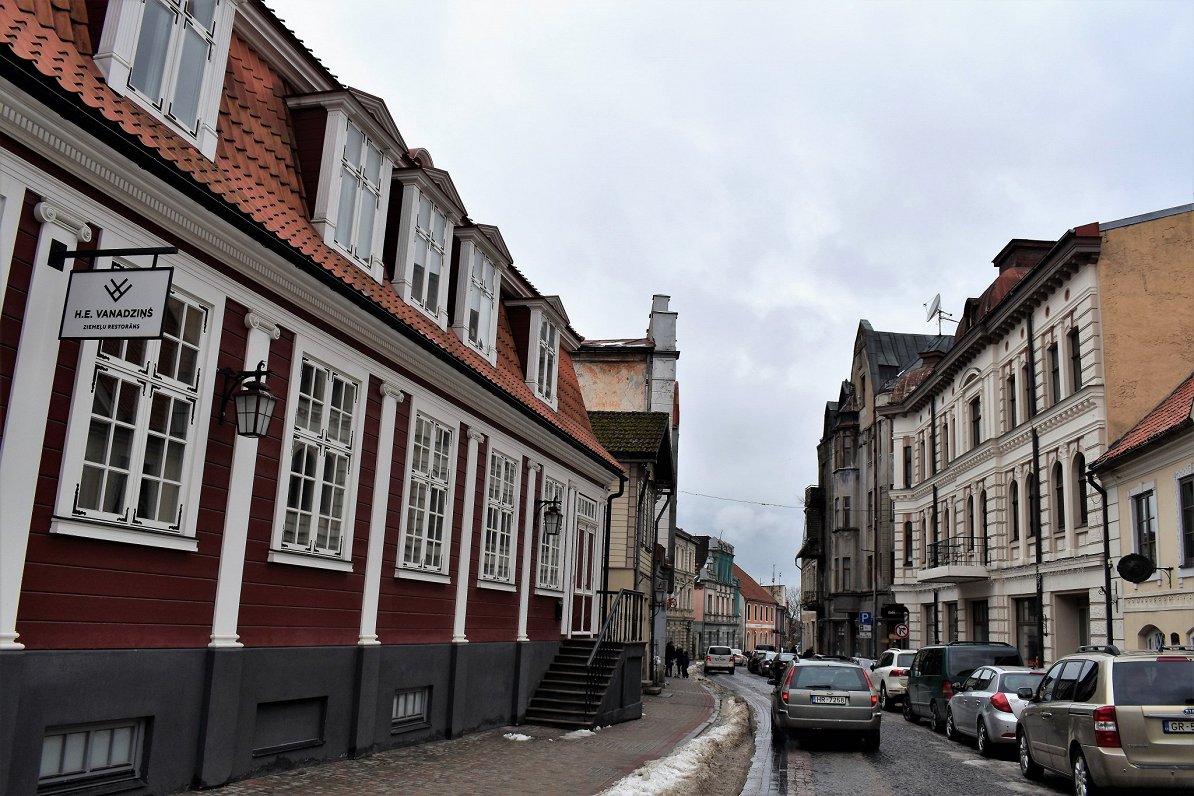Sporting a gorgeous old town and surrounded by charming landscapes, Cēsis has powerful visitor magnets gifted by history and nature. But its people are also smartly using culture to boost development, and they have an intriguing vision for 2027.
Latvia’s national flag is claimed to be one of the oldest in the world, dating back to 1279 when warriors from Cēsis carried the maroon-white-maroon standard into battle. And this county in the middle of the land has led the nation in other important ways, producing renowned writers, composers and scientists and the oldest brewery in the Baltics.
With such a rich heritage, Cēsis and its environs are arguably the cradle of Latvian national identity. And as the world changes thanks to the pandemic and the related government responses, the region’s inhabitants claim to have a formula to soothe the world’s aches and pains.

Not just cobblestones and concerts
Cēsis and Liepāja were joint runners up for the 2014 prize. According to Atis Egliņš-Eglītis, the head of the Cēsis Municipality working group for the 2027 European Capital of Culture, a lot has been learned in the intervening years. Moreover, the town has since added an impressive concert hall and expanded its annual arts festival, developing a model for growth meshing culture and tourism with the wider economy.
“From day one, we have said this is not just about culture, but also about business, ecology and education,” he says. “We want all sectors to work together.”
The bid extends beyond the medieval castle ruins of the town of 15,000. The boundaries of Cēsis Municipality will be expanded after local elections in June, and there has been much zoom communication to learn what residents want and how to involve them in the process. Opinion polls show overwhelming support for the bid.
“In 2027, we want the festivities to reach every village and farm, says Atis. “So we’re devoting a lot of energy to meeting people.”
Rather than major construction projects and headline performers, Cēsis 2027 will be based on four conceptual pillars.
The first one is about addressing environmental and climate issues. Rather than building infrastructure which will never be used again, they want to leave a light carbon footprint and reduce waste.
Second on the list is education, employing “culture as a tool for learning.” A gastronomy festival in the villages will nurture local identity, and it wouldn’t be Latvia without a big song and dance festival.

The third pillar, democracy, is embedded in the egalitarian spirit of the bid process, as well as the free speech festival “Lampa” already held annually in Cēsis. Atis believes culture can be used to build bridges with Russia, Belarus and Ukraine to try and impart some of Latvia’s experience in opening up society over the last three decades.
The final element, health, is obviously on everyone’s mind, and Atis believes Cēsis can help heal us. In earlier generations, the town had a sanatorium for tuberculosis patients, and as the psychological toll of the current pandemic will be with us for many years, small-scale meditative concerts amidst the greenery of the Gauja National Park may be just what the doctor ordered.
“Cēsis is a place to find inner peace,” says Atis.
And in this spirit, below we list five places in the county to recharge one’s emotional batteries.
Top Five Natural Highs in Cēsis
This unique guesthouse gives new meaning to the term “hanging out.” The glass hut suspended on cables over the Amata River allows it lucky guests gaze at the stars, listen to the gurgling waters and wash away stress. Four friends can have lunch and two can spend the night, lifting your relationship above the daily grind.
Created by veteran zoologist Velga Vītola, affectionately known as “the bears’ mum” for her friendly relations with critters, this innovative conservation park lets you get close to wild animals in their natural setting. Stroll the five kilometers of forested paths to spot foxes, lynx, elks, boars and more in enclosures that closely match their typical homes.

Drift back to a gentler age at the only timber baroque building in Latvia. The pride of the lovely old home of the barons von Campenhausen are the well-preserved 18th century wall murals and the grand oaks around the property. Check out the museum, dine on hearty Nordic staples in the restaurant or make your wedding vows on the Lover’s Island.

Get back to basics at Europe’s only reconstructed Iron Age settlement. The reconstructed village on a lake island meticulously reflects conditions a thousand years ago and there have been any valuable archaeological finds at the site. Nearby is an elegant 19th century windmill, a church dating back to the 13th century and the ruins of a medieval stone castle.

Meet the Zvirbulis family, a dynasty of talented artisans who have revived the ancient craft of making beautiful and practical items out of birch bark. Humans have been creating canoes, shelters and vessels for food and drink out of this material since the Stone Age, and it makes perfect zero-waste containers today. Visit the workshop or sign up for a session to learn how to do it yourself.


























